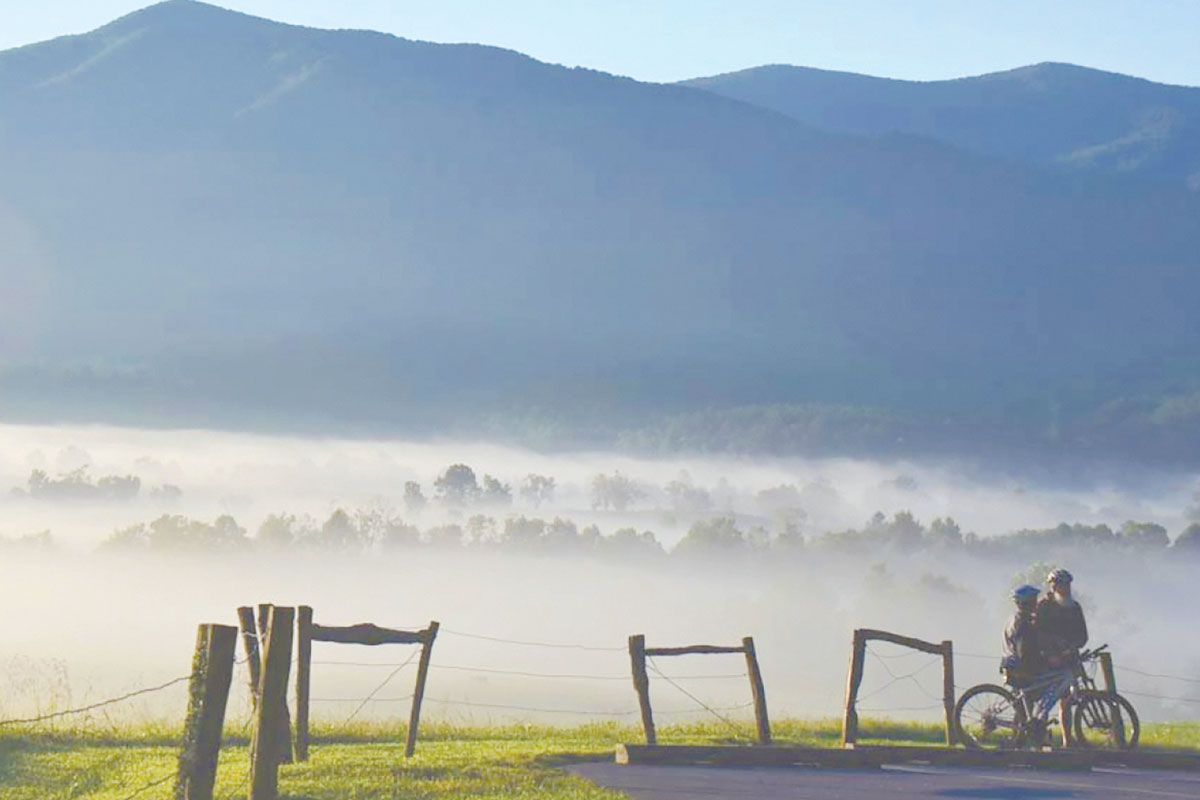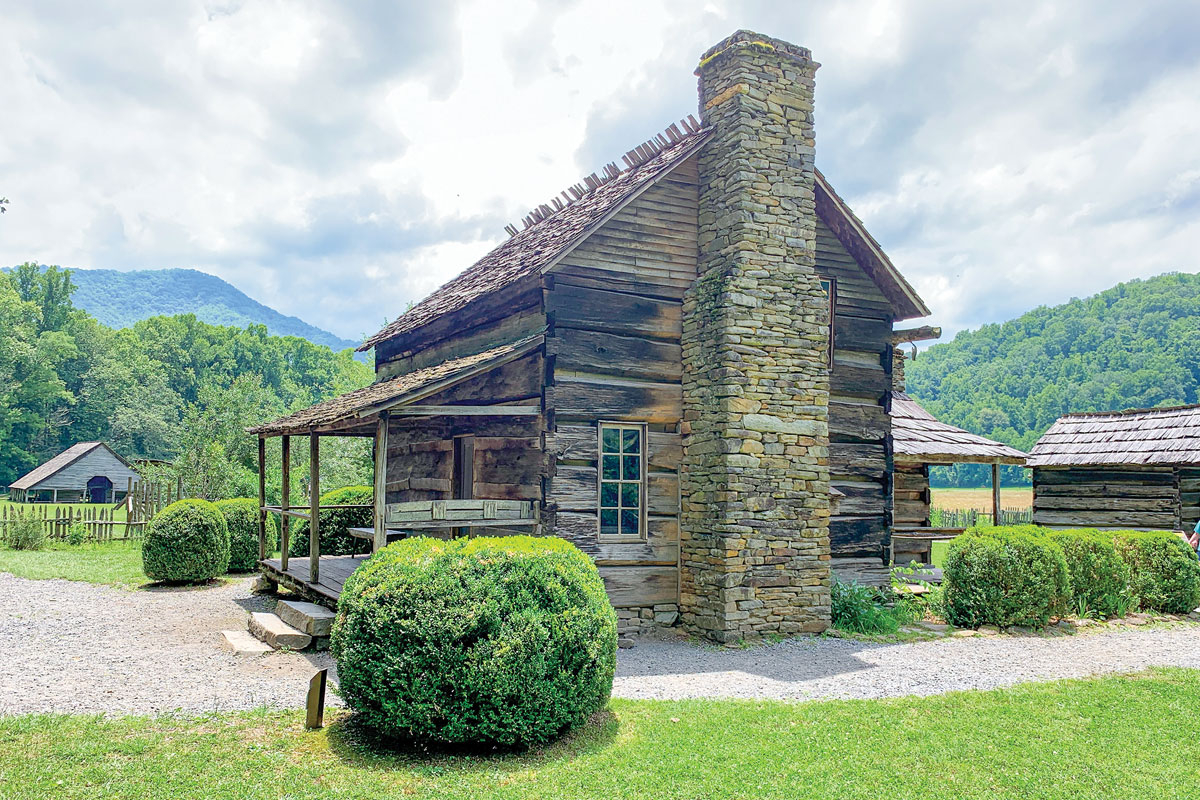Admin
Cecil Groves, former president of Southwestern Community College, is the new CEO of BalsamWest FiberNet.
Groves, who had moved to Texas to be near family, replaces David Hubbs, who announced he was leaving to pursue personal
Davis Woodard, a veteran law enforcement officer in Jackson County, has been selected as Sylva’s new police chief.
A new state bill aims to encourage children to put down the sugary juices and frolic on the playground outside.
The Swain County Sheriff’s Office has received a grant from the U.S. Department of Justice under the 2010 COPS Hiring Program.
The grant, in the amount of $125,811.00, will cover one officer position for a three-year period. The grant will be used to pay the wages and related benefits for the officer during that time. As part of the grant, Swain County will be required to retain the officer for one additional year after the completion of the grant period.
Commissioners will have to act to accept the grant before it can become effective.
The job training and life skills program, sponsored by REACH of Jackson County, has moved from its original location at the Client Service Center to Mariposa Boutique, the REACH thrift shop on Skyland Drive in Sylva.
New Choices is a program for any displaced homemaker starting over in the job market, desiring to be more self-sufficient or wanting to make a positive change in life. The program is available through REACH and funded by the N.C. Council for Women.
828.586.8778 or 828.506.0844
A golf tournament will be held Monday, Oct. 18, at Highlands Falls Country Club in Highlands.
Registration begins at 9 a.m. The “Playing for a Purpose” tournament will benefit REACH of Macon County, a nonprofit agency serving victims of family violence and sexual assault.
Mary Cathey, LPGA teaching professional, will conduct a golf clinic at 9:30 a.m., before the tournament.
The tournament will be four-person teams, shotgun start at 10 a.m. Registration is $125 per person, due with entry. Lunch, salad buffet, drinks and dessert will follow play.
828-369-5544.
Training for hospice is scheduled for the end of this month at Lake Junaluska First Baptist Church.
Haywood Regional Medical Center Hospice & Palliative Care will hold the volunteer training series on Monday, Tuesday, Wednesday and Thursday, Oct. 25, 26, 27 and 28.
The 12-hour program will orient volunteers to the hospice philosophy and program, and help them to find their niche in hospice volunteerism.
Volunteer opportunities include: patient and family support; companionship visits; respite care for caregivers; errands; bereavement support; delivering a single rose to the family after death; office assistance; chaplaincy and other professional services; fundraising and community events planning.
828.452.8578.
A forum for Macon County Commissioner candidates will be hosted by the League of Women Voters of Macon County at 12:15 p.m. on Oct. 14 at Tartan Hall, First Presbyterian Church of Franklin.
Incumbents Ronnie Beale (D) and Bob Simpson (D) will face Charlie Leatherman (R), Ron Haven (R), and Vic Drummond (I) for the two District 2 seats. Incumbent Brian McClellan (R) will face Allan “Ricky” Bryson (D) for Highlands District 1 seat.
A radio tower that caused an outcry in Franklin because of its height — 471 feet — and its location — on the outskirts of town, in a residential area — won’t be built there after all.
Instead, following a meeting of town, Macon County representatives and the state Highway Patrol, the tower will be placed near the Welcome Center several miles south of town on U.S. 441, Town Manager Sam Greenwood said.
It also will be shorter than originally proposed, just around 300 feet, he said, because the new location south of town is a better all-around site.
The state Highway Patrol had proposed erecting the tower just off U.S. 28 on Ivar Street.
A conference at Lake Janaluska Dec. 2-4 will be, “Embracing Christ’s Multi-Ethnic Body: Breaking Down Barriers and Building Bridges.”
This represents Lake Junaluska’s second multicultural conference.
During this event, people will experience life-changing times of listening and learning as participants share stories of challenges, disappointments, hopes and triumphs along the pilgrimage to make churches the inclusive communities of love and respect.
“The Lake Junaluska Multicultural Conference will be a place for embracing diversity,” said The Rev. Jimmy L. Carr, executive director of Lake Junaluska. “Persons will come together in a safe, life-affirming and life-transforming environment to explore the common bond of God’s love for all.”
Leaders include: The Rev. Eric Law of Kaleidoscope Institute (via Skype); Bishop Gregory Palmer of the Illinois Area; Bishop Will Willimon of the North Alabama Conference; Kristina Gonzales, associate director of Connectional Ministries for the Pacific Northwest Conference; Anne Marshall, a community activist who speaks on Indigenous issues, racism, and human rights violations around the world; Tim Tyson, award-winning author of Blood Done Sign My Name, and Senior Scholar at the Center for Documentary Studies at Duke University; The Rev. Mary John Dye, who began her ministry as the first cross-racial appointment in the Mississippi Conference; and Bishop William Morris (retired), who provides leadership for the Design Team of the Multicultural Conference.
Early registration ends Oct. 16. One CEU credit available. Call 828-454-6656 or visit www.lakejunaluska.com/multicultural to register or for more information.
The famous Inspirations Gospel group will welcome fall at the Smoky Mountain Center for the Performing Arts in Franklin on Oct. 15-16.
The Fall Colors Festival will feature The Family and Friends Tour, The McKameys, and The Inspirations on Friday, Oct. 15, beginning at 7 p.m. Tickets range from $9 to $18. Saturday, Oct. 16, features The Dove Brothers Quartet, Tim Surrett and Balsam Range, The Perrys, Marshall Henson and Gem City, The Punches Family and The Inspirations.
The show begins at 1 p.m. and tickets range from $10 to $20.
The Smoky Mountain Center for the Performing Arts, located in Franklin, is a modern 1,500 seat facility featuring a state-of-the-art, concert-grade sound system. The center showcases artists from Western North Carolina and the surrounding areas and seeks to nurture the development, understanding and appreciation of the arts throughout the community and the region. To purchase tickets to any performance at The Smoky Mountain Center for the Performing Arts, to get more information, or to see a schedule of coming events, go to GreatMountainMusic.com or call 866.273.4615.
The Smoky Mountain Brass Quintet will perform a free concert at 8 p.m. Tuesday, Oct. 26, in the recital hall of the Coulter Building on the campus of Western Carolina University.
Pieces include Contrapunctus IX by J.S. Bach, “Laudes” by Jan Bach, a tuba concerto by Christer Danielsson, Music Hall Suite by Joseph Horovitz, “Killer Tango” by Sonny Kompanek and “Guantanamera” by Jean-Francois Michel.
For information about the Smoky Mountain Brass Quintet, call Ulrich at 828.227.3274 or go online to www.smbq.org.
Approximately 3,500 students from 23 high schools will compete for top marching band honors during a daylong competition Saturday, Oct. 16, at Western Carolina University. The 10th annual Tournament of Champions, a showcase for elite high school marching bands, will begin with a preliminary session at 9 a.m. at E.J. Whitmire Stadium. The top 10 advancing bands will be announced at 4:30 p.m., and the evening session will begin at 7 p.m., with finalists competing for the grand champion Chancellor’s Trophy. For more information call 828.227.2259 or go online to www.prideofthemountains.com.
The Fourth Annual Mountain Music Jamboree at Eaglenest Entertainment in Maggie Valley is Oct. 15-16 and will feature several well-known performers.
Featured entertainers include:
Bill Yates and Friends “A Tribute to the Country Gentlemen” is the result of the love of the “Real” Country Gentlemen music and an impromptu jam session. Bill Yates was a member of The Country Gentlemen from 1969-1989, recording 17 projects with the group and traveling the world over.
Bobby and Blue Ridge Tradition is a five-piece bluegrass band from Asheville that plays a unique mix of traditional and not-so-traditional bluegrass music. The band’s style is clearly not your standard run-of-the-mill bluegrass.
Cody Shuler and Pine Mountain Railroad, an award-winning national touring band and Rural Rhythm Records recording artists have been busy entertaining at festivals, concerts, and other performance venues in the United States and abroad. Now into their eleventh year, this five-piece bluegrass band is led by Cody Shuler, the nine-year veteran performer.
Lost & Found became quite popular in the early 1970’s, with Allen Mill’s exceptional songwriting contributing much to the group’s fame. “Love of the Mountains” was recorded then and has become a contemporary bluegrass standard.
Balsam Range is a band based in Haywood County that entertains all ages with bluegrass, gospel and country music. Their songs, many written by band members, reflect the musical heritage and traditions from the Southern Mountains, The Grand Ole Opry, and influences of the Appalachian settlers.
Barachah Valley was formed five years ago when friends wanting to play, and sing, traditional bluegrass and gospel music decided to get together to play their favorites and put a traditional spin on modern renditions.
The Fourth Annual Mountain Music Jamboree kicks off Oct. 15 at 6:30 p.m. and continues Saturday, Oct. 16 at 6:30 p.m. For information and tickets call 828.926.9658 or visit our web site at www.eaglenestnc.com.
The 21st Annual Leaf Lookers Gemboree will be held Oct. 15-17 at the Macon County Community Building just south of Franklin off U.S. 441. Gem and mineral dealers from across the country will be on hand displaying and selling fine jewelry, gems, minerals and more.
The Leaf Lookers Gemboree will feature a wide variety of items including fine finished jewelry, rough and cut gems, lapidary equipment, minerals, fossils and collectibles. Dealers will also be available to custom make that special piece of jewelry you’ve always dreamed of or for the upcoming holiday season.
“All dealers who attend our Gemborees return year after year because the Franklin shows are among the best in the country,” said Linda Harbuck, executive director of the Franklin Chamber of Commerce.
Admission price is $2 for those 12 and older, free for those under 12. 10 a.m. to 6 pm. Friday and Saturday, 10 a.m. to 4 p.m. on Sunday. 828.524.3161 or toll free at 800.336.7829.
The Smoky Mountain Community Theatre’s fall production will be “Twelve Angry Jurors – The Encore.”
The play was performed in July, but now it is back by popular demand.
A 19-year-old man has just stood trial for the fatal stabbing of his father. It looks like an open-and-shut case — until one of the jurors begins opening the others’ eyes to the facts. It becomes personal at times, with each juror revealing his or her own character as the various testimonies are re-examined, the murder is re-enacted and a new murder threat is born before their eyes.
The show will run at 7:30 p.m. Oct. 14-18. Tickets are $8 for adults, $5 for students ages 6 to 18. Children under 6 are free.
The theatre is on Main Street in downtown Bryson City. For information or reservations call Director Toby Allman at 828.488.8103 or 828.508.6645.
Haywood County writer Michael Beadle will give a program on Haywood County history at 3 p.m. on Sunday, Oct. 17, at the Haywood County Public Library in Waynesville.
The program includes a slide show of rare photographs from Haywood County’s past, interactive discussion, and a question-and-answer session on Haywood County’s history. The program includes information on the coming of the railroad and industry to the heyday of hotels and resorts, to the families and events that have shaped its mountain communities and towns.
The presentation will be held in the downstairs auditorium of the library. Refreshments will be served. The program is part of the Sunday Concert Series, a year-long, once-a-month series of free concerts and lectures available to the public, co-sponsored by the Haywood County Arts Council and the Friends of the Haywood County Library.
Beadle is the co-author of Haywood County: Portrait of a Mountain Community as well as the author of two recently published Images of America books: Haywood County and Waynesville (the latter written with Peter Yurko). After spending the past several years researching, gathering materials, and writing about Haywood County as part of the bicentennial celebrations for Haywood County and Waynesville, Beadle has been helping to organize the Haywood Snapshot Project, which seeks to save, share, and sustain Haywood County’s historic photo collections for future generations.
828.400.6374.
The 5th Annual Big Rigs and Antique Trucks Show will be held from 9 a.m. to 5 p.m. on Oct. 15 and 16 at the Acquoni Expo Center in Cherokee.
The event is sponsored by the Western NC Truck Chapter of the American Truck Historical Society. Last year more than 2,200 spectators and participants attended, and this year organizers expect more than 150 trucks to be on display. Models range from the antique to the working class, including pickup trucks, semis, dump trucks, and more.
Anyone with an antique truck may register. Parts and swap meet vendors and food displays will also be available at the show. For all trucks approved for display, the registrant and a guest will receive free admission.
Admission is $5; children 12 and under are free. 828.421.9399.
The 22nd annual Haywood County Apple Harvest Festival will be held from 10 a.m. to 5 p.m., Saturday, Oct. 16, in downtown Waynesville.
The annual festival, which celebrates the beauty of the harvest season in Haywood County, features handmade arts and crafts, locally grown apples and apple products for sale. In addition, the festival will feature food vendors of all types, educational and information booths, authentic mountain music, dance groups, and a children’s fun area.
Scheduled performers for this year’s festival include Gray Wolf, the Hominy Valley Boys, Simple Folk, Frog Level Philharmonic and the Josh Fields Band. Adult and youth clogging groups will also perform throughout the day providing non-stop entertainment from 10 a.m.-5 p.m. With more than 25,000 people attending last year’s festival, Haywood County looks forward to a great vendor turnout and a great day for visitors, local merchants and local residents.
New for the 2010 festival is the Miss and Master Apple Harvest Festival Natural Beauty Pageant. The pageant will be held in the children’s fun area next in the United Community Bank Parking area. Applications may be picked up at Fun Things Etc. prior to festival day.
The Haywood County Apple Harvest Festival is presented by the Haywood County Chamber of Commerce, the Downtown Waynesville Association, the Haywood County Extension Service and the Haywood County Apple Growers.
Festival sponsors include Progress Energy, BluePrints for Business, New Meridian Technology, Clear Channel Communications, O.C.’s BBQ, The Smoky Mountain News, Fun Things Etc. and The Mountaineer.
For information contact the Greater Haywood County Chamber of Commerce at 828.456.3021.
Bryson City
The 20th annual Bryson City Chili Cook-off will be held from 10 a.m. to 4 p.m. Oct. 16 at the Great Smoky Mountain Railroad Depot.
The contest includes awards for both professional and amateurs and a people’s choice winter. The festival — which includes arts, crafts and entertainment —annually attracts about 3,000 to the downtown area.
For more information contact the Swain County Chamber of Commerce at 828.488.3681 or visit www.greatsmokies.com.
Sylva
The Downtown Sylva Association’s 3rd annual Chilly Fest is set to begin at 12 p.m. on Nov. 6, at the Bridge Park and Poteet Park in Sylva.
The event is in need of both professional and amateur Chili Cook-off contestants as well as crafters. For an event application visit www.downtownsylva.org, email This email address is being protected from spambots. You need JavaScript enabled to view it. or call 828.586.1577.
Live music from Ian Moore’s Mountain Music Miscellany and The Vinyl Brothers Big Band, children’s activities and host crafters will provide entertainment during the cook-off.
An after party will be held from 5 p.m. to 11p.m. at The Village at Sapphire Mountain Brewing Company featuring beer from Heinzelmannchen Brewery, live music and food and drink specials. Chilly Fest crafters are invited to move their booths to The Village at Sapphire Mountain Brewing Company during the after party.
Artist James Smythe has opened a new upstairs art studio in the Downtowner Building at 563 West Main Street in downtown Sylva.
Smythe has created a salon style hallway gallery to display and sell paintings. For the past 40 years he has been a painter of oils, acrylics and pastels using various styles.
Smythe was a full professor in the art department at Western Carolina University for 31 years. He and his wife Sylvia have moved their residence from Webster to his family home in Sylva.
The Green Energy Park in Jackson County will hold a two-part mold making workshop Oct. 18 and Oct. 22.
Experienced artists may skip the mold making workshop and bring their own molds on the day of the pour.
• Mold making, 10 a.m. to 3 p.m. on Monday, Oct. 18. $5 plus materials fee of $5 to 20 depending on size of finished mold. No experience necessary, beginners are welcome.
• Aluminum pour, 10 a.m. to 3 p.m. on Friday, Oct. 22. $5 plus $1.50 per pound for aluminum use. Experienced artists may bring their own leathers and safety gear, and potentially participate in the metal pour. Wear closed-toe leather boots, long pants and clothing made of natural fibers.
Space is limited. Advanced registration required for both. 828.631.0271.
The Haywood County Arts Council will host the Appalachian Pastel Society’s second National Juried Exhibition beginning Wednesday, Oct. 20, through Saturday, Nov.13.
Grand prize for Best of Show is $1,000. Many other prizes will be awarded including pastel sets, other art supplies and product certificates. In conjunction with the show, artist and exhibition juror Ann Templeton will be teaching a workshop on “Abstracting the Landscape in Pastels” Oct. 14-18. Templeton is a nationally known oil/pastel-conceptual impressionist. For more information on the workshop visit: www.appalachian-pastel-society.org
The National Juried Exhibition finalists include more than 30 artists. Those from Western North Carolina include Peggy Duncan of Bryson City; Joyce Kay Gordon of Marshall; Nancy Clausen of Swannanoa; Susan Sinyai of Asheville; Carol Branton Morrow of Swannanoa; and Fran Greenberg of Asheville.
For more information about the Appalachian Pastel Society visit the web site at www.appalachian-pastel-society.org.
See the show
WHAT: “Appalachian Pastel Society National Juried Show,” an exhibition of pastel works by thirty-nine US artists
WHEN: Wednesday, Oct. 22 through Saturday, Nov. 13. Monday through Saturday, 10 a.m.-5 p.m. Artist’s reception on Friday, Oct. 22, from 6 o 9 p.m.
WHERE: Haywood County Arts Council’s Gallery 86 located at 86 N. Main Street, Waynesville.
ADMISSION: Free and open to the public
The Gallery at Southwestern Community College’s Oconaluftee Institute for Cultural Arts will feature two Cherokee artists in October as part of a new series of shows.
Horizons: Dean Reed & Henrietta Lambert opened on Oct. 1 and will run through Nov. 21. A reception for the artists will be held on Wednesday, Oct. 13, from 4 to 6 p.m.
“Opportunities to showcase local artists give our students a chance to network and derive inspiration from the community,” said Jeff Marley, program coordinator for OICA. “It is a natural fit to our program at OICA that we promote local artist.”
Reed has been working in clay for over 37 years, following a traditional Cherokee style of stamped pottery. He was a founding member of the Cherokee Potters Guild and a member of the Qualla Arts and Craft Mutual in Cherokee.
Lambert focuses primarily two-dimensional work, such as painting and drawing. She is the first graduate from OICA and is currently perusing her bachelors at Western Carolina University.
By Leon Grodski de Barrera • Guest writer
There are a lot of ways to spin Christopher Columbus’ accomplishments or his misdeeds, depending on which version of history you go by. Some call him a hero, some a murderer, many a discoverer and many a thief, and the list goes on and on.
One that you don’t hear so much is public relations guru. Whether it was intentional or not, he initiated one of the longest lasting and most successful PR campaigns in history, that of the dehumanization of indigenous people. With the goals of conquest, riches and spices, Columbus played upon the racism and greed of the king and queen of Spain, the members of his crew and the throngs of conquistadors who followed in his wake. Invisibility and marginalization of indigenous people paved the way for their projects.
From the first mention of contact in his journal from the first voyage, Columbus portrays the people — whom he calls “Indians,” thinking he is in India — as at once noble and empty, deft guides and ready-made slaves for the king and queen of Spain. Columbus weaves these ideas prominently through his journal, and this legacy, this habit of mind continues as a prominent thread in the fabric of greater American society to this day, more than 500 years later.
In “Reclaiming Cultural Ownership: Challenging Indian Stereotypes,” Shan Goshorn is determined to reclaim cultural ownership for Native Americans. In her artist statement, Ms. Goshorn, a member of the Eastern Band of Cherokee, said, “History has proven that a way to successfully eliminate a people is to deny them their culture. We remember the obvious attempts of boarding school practices, but we can equate racist commercialism as an attempted genocide as well.”
Goshorn has created an art installation that draws a direct contrast between racist commercialism that necessitates the invisibility of Native Americans within greater American culture and photographs of the everyday lives of people of different tribes as seen through the artist’s eyes.
When entering the gallery, one is immediately struck by the dramatic contrast between the varied and colorful commercial objects presented on several pedestals inside glass cubes that are thoughtfully situated throughout the floor space. These objects employ native stereotypes and appropriate native names to sell goods and services neither owned by nor representative of Native Americans. Goshorn presents her black and white photographs, taken through the 1990s, one next to the other at eye level completely lining the room. It’s almost as if they are surrounding the colorful and seductive lies of commercialism with a black and white look at and affirmation of everyday life of native people today.
The photographs are a sample from the artist’s greater collection that are at once unique to this group of people and common to everyone. People represented are from many North American tribes, including Cherokee, Cheyenne, Yuchi, Seminole, Muscogee and Lakota. These people and tribes are as varied culturally and linguistically as the Germans, the French, the Polish and Spanish or people of any other nations who have different customs, religions and histories. As Goshorn is part of the lives of the people in the photographs, she is able to represent them in a way that is snapshot and sophisticated document, avoiding the “sweep in and set ‘em up, size ‘em up and leave” shots that we frequently see in national magazines.
One may notice some trends in the objects. There are the wild-Indians-made-in-China-plastic-toys such as the “cowboys and Indians” action figures sets, some of which are packaged with pictures of non-native boys dressed up as “Indians.” There are the wildly happy looking team mascots and sports caps. Then there’s the back-to-the-earth food product, or better yet an Italian ice cream that has nothing even remotely to do with any native culture. Advertisements for industrial products, like tires, seem to use native names for their catchiness and ease of recognition. In the Unocal oil company’s sponsored foam-hand-shaped-Braves-souvenir, the continued connection between the empty use of native images with corporate goals is clear. The made-in-China-plastic “Pocahontas, Indian Princess” is up there in its implied racism with the stripper who is marketed as an “Indian Fire Goddess.” Wow!
Any of Goshorn’s photographs could stand alone, with their professional composition and unique viewpoint, yet their greater power in this exhibition is their cumulative effect. Grouped together they surround all the seductive and colorful lies put forth by corporations and their interests, using native images for the sake of creating money for non-natives. The photographs work directly against popular pigeonholing, mere dollar accumulation and simple stereotyping. As the black and white images show, none of these stereotypes have much to do with Native Americans as they really are and the contrast of the characterization of “Indians” with the multiplicity of real lives as seen in the photographs draws this to mind.
All of the photographs are particularly indigenous, by the nature of the subjects and artist. And some show elements of life that are unique to native people, or to particular tribes; Enos Taylor, Eastern Cherokee, is gathering honeysuckle vines for traditional Cherokee basket making; Russell Means, Lakota, protests the Cherokee Strip 100-year “celebration” of the Oklahoma ‘sooners’ settling tribal land; and Elsie Martin wraps bean bread in corn husks before boiling them.
In all of these pictures the content of what people are doing is special to their heritage and way of being. Yet the smiles, togetherness, accomplishments, struggles and love are universal.
You can see this through many of the other photographs: an elder, Margaret Davis, is sitting in her comfortable chair using her hands passionately while speaking; Nancy Bradley, Ina Driver and Melonie Bradley, women of three generations, sit together, the granddaughter with a warm, shy smile; two well respected multi-media artists, Richard Ray Whitman, Yuchi/Pawnee and Joe Dale Tate Nevaquay, Yuchi/Commanche are in a booth at an art exhibition. Director Mona King, Ottawa/Quapaw, and Curtis Zunigha, Delaware/IslettaPueblo are editing a show for television. Judicial Magistrate Charles Tripp is in his court. These people with joys, growth spurts, duties, generational differences, in their exposure, subvert the common questions one can hear in Cherokee, North Carolina, every day: “Where can I find some Indians?” or “My great grandmother was a Cherokee princess,” or “Can I take a picture with that Indian?” and so on.
And as with any other people on Earth, change is evident. The boy, Steven Ross, Eastern Cherokee, writes on a chalkboard words in the Cherokee Syllabary, reclaiming the language that had been forcibly taken from his family through the boarding school process. Junior Miss Indian Tulsa, Denise Graham, Delaware/Yuchi, gets dressed and prepares “cans,” a modern-day versions of turtle shell rattles for the American Indian Heritage Center’s Summer Celebration Stomp Dance Demonstration. American Indian Movement activists gather to support change at the United Nations World Hearings on Racism as a Violation of Human Rights.
The layout of the space encourages multiple viewings of objects and images, a back and forth between the vibrant colors of smiling, big teeth feather in the hair baseball caps, kitschy books about white women taking on native identities, made-in-china plastic warriors in canoes and large scale black and white photographs such as an elder standing in front of the frame of a sweat lodge, tribal council holding session, kids in school saying the Pledge of Allegiance and a grandfather adjusting his grandson’s clothing. The seconds that pass walking between the clichés of commercialism and the rare treat of visiting the individuals through the artist’s empathetic eyes allow for the time necessary to build layer upon layer of dissonant images, that when understood altogether incite an openness to change and the obliteration of the cliché.
(Leon Grodski de Barrera is the great-grandchild of Italian, Irish, German and Polish immigrants who came to the United States via Ellis Island over 100 years ago. He is an artist, writer and coffee man based near the Qualla Boundary in Western North Carolina. http://the-sushi-bar.com)
Check it out
The exhibition Reclaiming Cultural Ownership: Challenging Indian Stereotypes runs until October 24th at the Western Carolina University’s Fine Art Museum. www.wcu.edu/museum. For more information on Shan Goshorn visit www.shangoshorn.com.
The N.C. Wildlife Resources Commission, along with the North Carolina Wildlife Federation and the North Carolina chapter of the American Society of Landscape Architects, has unveiled a green-growth initiative that encourages wildlife-friendly practices for new and existing residential developments.
The Wildlife Friendly Development Certification program recognizes residential land developers who promote the conservation of wildlife habitat and use environmentally sound construction practices in their developments.
To acquire certification, developers work closely with the staffs from the Commission and Federation to determine what wildlife friendly features will be incorporated into the development to earn certification. Developers must include a certain number of wildlife friendly features throughout all phases of the development’s planning and construction, and must maintain these features once the development is completed.
“North Carolina is experiencing unprecedented growth. Through sustainable development practices outlined in this program, we can contribute to the conservation of wildlife habitats alongside new developments,” said David Cox, the Commission’s Technical Guidance supervisor. “This voluntary program allows for growth but, at the same time, conserves wildlife resources and improves the quality of life for homeowners.”
Visit www.ncwildcertify.org
Raccoons across WNC may stumble upon unexpected tasty treats this week: fish-flavored morsels containing an oral rabies vaccine.
More than 700,000 baits will be scattered over the mountains of North Carolina, Tennessee and Virginia by fixed-wing aircraft this week, and another 120,000 by hand.
The oral rabies vaccinations are coated with a fishmeal flavoring and come in one-inch square cubes or two-inch plastic sachets. Humans and pets cannot get rabies from contact with the baits, but are asked to leave them undisturbed should they encounter them.
The mountains are part of a vaccination zone to prevent the westward and northward spread of rabies. Geographic features such as large lakes and rivers as well as the Appalachian Mountains act as natural barriers to rabies’ spread.
The oral vaccine has been shown to be safe in more than 60 different species of animals, including domestic dogs and cats. Dogs that consume large numbers of baits may experience an upset stomach, but there are no long-term health risks. The U.S. Department of Agriculture’s Animal and Plant Health Inspection Service is in charge of the effort.
Raccoon rabies is found in virtually every county in North Carolina, and raccoon-variant rabies is responsible for the majority of rabies cases in domestic and wild animals throughout North Carolina. There have been 164 confirmed cases so far this year.
A put-in on the Nantahala River that had seen better days has gotten a stunning new makeover.
The put-in at Ferebee Memorial Park on the Nantahala River, along U.S. 19 in the Nantahala Gorge, now features rock retaining walls along the river bank, new sidewalks leading down to the river and a new launch ramp.
The new ramp can accommodate larger rafts and groups. The put-in is now also handicapped accessible. In addition, the stream bank has been stabilized with new vegetation, benefiting the health of the stream.
Ferebee is used as a put-in by individual paddlers rather than commercial rafters, and also offers a wayside stop for those paddling the length of the Nantahala or touring the Gorge by car. It has picnic tables, grills and restrooms.
The project cost $200,000 and was funded with federal stimulus money. The work employed five people locally. 828.525.6441.
Bicyclists, ghosts and goblins will be on the road for the Tour de Franklin “Halloween Hunard” charity bicycle ride on Sunday, Oct. 31. The race starts at 9 a.m. from Smoky Mountain Bicycles in Franklin, which sponsors the annual autumn ride.
More than 100 cyclists participated in last year’s ride. It’s popularity has spread because of the beauty of the courses, the festive Halloween atmosphere and the great post-ride meal.
Routes feature rides of 28, 66, and 103 miles with total climbing elevations ranging from 2200 to 8500 feet.
Smoky Mountain Bicycles owners Dave and Pam Forshee mapped out the routes to include spectacular mountain scenery when the fall colors are at their peak.
“We welcome volunteers — Halloween costumes encouraged — to help provide support at rest stops,” Pam Forshee said. “Last year, our generous sponsors and volunteers helped make the ride a great success.”
All proceeds will go to the Franklin Fire Department first responders and go toward the purchase of an automated cardiopulmonary resuscitation machine. Cost is $35 before Oct. 15 and $45 afterwards. The ride fee includes fully stocked rest stops, a commemorative custom t-shirt, and a post-ride meal. Sponsorships, which include the sponsors name on ride T-shirts are $100.
828.369.2881 or check out www.tourdefranklin.com for maps and cue sheets.
The Plateau Fly Fishing Club will hold its last meeting at 7 p.m. on Monday, Oct. 18, at the Albert Carlton-Cashiers library. The meeting will feature Jeff Curtis who will discuss fly fishing in the Blue Ridge Parkway.
Curtis is the co-founder of Curtis Wright Outfitters, camp director of Trout Unlimited’s “Rivercourse” and local guide for the past 15 years. His family operates Sourwood Inn outside Asheville.
Following the presentation, a raffle featuring an Orvis 9’ 5 weight midflex rod and other fly fishing essentials will end the ninth season of the Plateau Fly Fishing Club. Event is open to the public. Call 828.885.7130 for information.
Parks and rec departments around WNC are jointly hosting a unique disc golf tournament for the first time ever on Saturday and Sunday, Oct. 23 and 24.
The disc golf course at the Waynesville Rec Park along Richland Creek is one of four sites where the Region 9 Sidewinder Disc Golf Tournament will be held. Others are Black Mountain, Mars Hill and Fletcher.
Top four winners from the regional sites on Saturday advance to finals on Sunday at the Richmond Hill Disc Golf Course in Asheville.
There are three divisions for all skill levels: novice, recreation and professional. The novice will place 18 holes and the recreational and professional teams will play 36 holes. The format is 2-person teams with a captains choice format.
The tournament is a fundraiser to support the North Carolina Recreation and Park Association. Cost is $20 per novice team, $40 per recreational team, and $50 per professional team. Lunch will be provided at each regional location on Saturday, and everyone gets a disc and T-shirt. Play starts at 10 a.m. on Saturday.
828.456.2030 or rThis email address is being protected from spambots. You need JavaScript enabled to view it., or 828.452.6789 or This email address is being protected from spambots. You need JavaScript enabled to view it..
An outdoor author who embarked on a modern day pilgrimage to follow in the footsteps of William Bartram, a naturalist and explorer in the region more than two centuries ago, will talk about his journey during a special program at 7 p.m. Thursday, Oct. 14, at the Macon County Library in Franklin.
Jim Kautz, author of Footprints Across the South: Bartram’s Trail Revisited, will give a talk called “What I Learned Following William Bartram Across the South” being sponsored by the North Carolina Bartram Trail Society.
Bartram explored the frontier from North Carolina to Louisiana just prior to the American Revolution, capturing the landscape and its inhabitants with eloquent descriptions.
Kautz set out to retrace that route — over the course of five years, 15,000 miles and seven states — comparing then to now and the historical, environmental and cultural occurrences that had occurred since. He tramped trails, paddled and motored rivers and streams, and interviewed dozens of residents, scientists, and community leaders in revisiting Bartram’s trail.
“Bartram’s writings give us a benchmark,” he says. “I found a few spots that have changed little in 230 years. A modern traveler can easily imagine the Cherokee town of Cowee in quiet pastureland and rows of corn beside the Little Tennessee River…. On the other hand, environmentalists struggle to restore the health of lands and streams that Bartram found lush and thriving.”
www.ncbartramtrail.org or email This email address is being protected from spambots. You need JavaScript enabled to view it..
The Great Smoky Mountains National Park and the Blue Ridge Parkway are playing host to a visiting entourage from Iceland, who are looking to the parks here as a model for a new national park of their own called Vatnakokull.
Specifically, the new Icelandic National Park hopes to copy the relationship between the Smokies and its non-profit support arm, Friends of the Smokies. A non-profit Friends group for the Icelandic park enlisted George Ivey of Waynesville, the former director of N.C. Friends of the Smokies, as a consultant to help them get started.
“Vatnajokull and the Smokies are different in many ways,” said Ivey, who also family roots in Iceland. “However, they share many common interests, including support for educational programs, scientific research, recreation, volunteer programs, and park philanthropy. We see a lot of potential for the two parks and the two friends groups to learn from each other over time.”
Vatnajokull National Park includes Europe’s largest glacier, Europe’s largest waterfall, and tremendous volcanic and geological resources. At more than 5,000 square miles in size and covering around 13 percent of the entire country of Iceland, Vatnajokull National Park is more than six times bigger than the Smokies.
The “shadow of the bear,” located in southern Jackson County near Cashiers, will be visible for 30 minutes daily between 5:30 p.m. to 6 p.m. from mid October through early November.
During this period, the bear-like shadow comes out of hibernation when the autumnal sun sets behind Whiteside Mountain. The mountain, with an elevation of 4,930 feet, boasts sheer rock cliffs that are among the highest in the eastern United States.
Tourists and photographers come from near and far to catch a glimpse of this natural phenomenon, which also occurs in late winter from mid February through early March.
800.962.1911 visit www.MountainLovers.com.
The 17th annual Bethel Half Marathon and 5K race will be held Saturday, Oct. 9.
The two routes follow back roads through the pastoral setting of Bethel. The race is known for its unique awards given to top finishers in each age class.
The race starts at 8:30 a.m. from the Bethel Middle School gym on Sonoma Road. Organizers will use chip timing for the first time this year.
Day-of registration starts at 7 a.m. Cost is $25 and includes hot soup, fruit, drinks and door prizes.
Proceeds benefit the Bethel Rural Community Organization. www.bethelrural.org or 828.506.0939.
By Reggie Jay • Guest writer
As the Benton MacKaye Trail turns 30 this year, a dedicated group of volunteers who toiled over the creation of the 288-mile footpath through the remote southern reaches of the Southern Appalachians are savoring the milestone.
The Benton MacKaye Trail Association, a group of trail lovers who know all about hard work and more work, have spent the past three decades “leaving a footpath for generations to follow.”
One of the charter members, George Owen, recalled the stops and starts along the way and the hard-fought negotiations with the forest service to allow the new trail to be built.
Owen says his involvement with the BMT has been “the biggest thing in my life besides my family.”
“It’s been my goal to keep the trail going and accessible for families,” Owen said. “It kept me totally occupied and brought me longtime friends. I’m 72-years-old and still leading hikes.”
The BMTA held the long-awaited ribbon cutting ceremony on the completion of its 288 mile trail on Mud Gap off the Cherohala Skyway on July 16, 2005.
The work continues, however, as volunteers now focus their efforts trail maintenance.
Simply reaching parts of the trail pose a challenge, like the portion that traverses the shore of Lake Fontana in the Great Smoky Mountains National Park.
“It’s 36 miles of trail, uninterrupted by road crossings,” said Dick Evans of Graham County, who has been a maintainer along the stretch. Evans.
Trail volunteers must first take a boat across the lake and then hike in to the backcountry campsites to remove any trash and generally spruce up the campsites. They also check to make sure the bear cables are functioning and clean ashes from the fire pits.
So why would someone want to spend their free time working this hard?
According to longtime member, Darcy Douglas, it wasn’t just a chance to “create primitive trails in the southeast.”
“It was the people that drew me in,” Douglas said “A group of dedicated, hard-working individuals with a common purpose can accomplish a great deal, and it is rewarding to be a part of such a group of people. The human element is what has made it work, and what has made such lasting friendships.”
Reggie Jay is a member of the Benton MacKaye Trail Association who lives in Trenton, Ga.
What is the Benton MacKaye Trail?
A 288-footpath from Spring Mountain in Georgia to the Smokies is named in honor of Benton MacKaye, the visionary and creator of the Appalachian Trail and a Harvard-educated conservationist.
By the time MacKaye passed away in 1975, the 2,174-mile-long Georgia-Maine creation had become a haven for those seeking time in the wilderness. But all those footprints on the AT took a toll on the trail.
In the late 1970’s, a group of Georgia hikers got together and decided to pursue an alternative southern route to alleviate the traffic on the AT and provide a more primitive trail.
While the AT travels along the eastern ridges of the Appalachians and lies mostly in Western North Carolina, MacKaye envisioned a southern route that instead lay to the west, passing from Georgia into Tennessee, then skirting the stateline along the edge of Cherokee and Graham counties before reaching the Smokies.
That route is the basis of the trail that bears his name.
Blue Ridge Books in Waynesville is offering a full lineup of special events this month. For more information on any of these events call 828.456.6000.
• 3 p.m. Saturday, Oct. 9: Vicki Lane, the popular regional author of the Elizabeth Goodweather mysteries, including Signs in the Blood, Art’s Blood, Old Wounds and In a Dark Season.
Lane’s new book, The Day of Small Things, tells the story of Miss Birdie, Elizabeth’s octogenarian neighbor. Lane and her family have lived on a mountain farm in North Carolina since 1975. The Elizabeth Goodweather books are a direct reflection of that experience.
• 9 to 5 p.m. Saturday, Oct. 9: Watch stained glass artist, Dianne Lee, work on the deck. Lee will design a one-of-a-kind, original work of art of the Blue Ridge Mountains.
With fourteen years experience in stained glass design as well as her background in horticulture and landscape design; all combine to capture the beauty, color, texture and light of our ever changing western North Carolina Mountains.
• 3 p.m. Saturday, Oct. 16: Bob Plott is the author of three books written about the Smoky Mountains: Strike and Stay-The Story of the Plott Hound, A History of Hunting in the Great Smoky Mountains, and Legendary Hunters of the Southern Highlands.
Plott is a North Carolina native who can trace his family roots in the Old North State back to 1750, when his great-great-great-grandfather Johannes Plott arrived here with five of the family hunting dogs. These dogs would later become renowned as the premier big game hunting dog breed in America — the Plott bear hound.
Mary J. Messer, author of Moonshiner’s Daughter, the recently published Haywood County based Appalachian memoir, presented a check to REACH of Haywood at their annual board meeting Sept. 20. Messer’s donation will to help REACH in its effort to prevent domestic violence, sexual assault and elder abuse and to assist survivors as they seek healing and safety during recovery.
She also donated over 30 copies of Moonshiner’s Daughter to the Within REACH Resale Store in Hazelwood. In her memoir, Messer tells the tale of her own harsh childhood and adolescence in Haywood County.
Messer will hold a free reading and book signing on Friday, Oct. 8, at Malaprops Bookstore in Asheville. For information, e-mail Messer at This email address is being protected from spambots. You need JavaScript enabled to view it. or 828.452.2539 or visit www.moonshinersdaughter.com.
To the Editor:
I am going to the dentist in the coming week. As a self-employed artist and educator, I have put it off. While I manage to pay for my own health insurance, I have no dental coverage. Luckily, my work has been productive and I can pull together the money. Perhaps you have been in the same position.
In the past month I have worked with not one but two students who have to decide between having a tooth pulled or having more expensive dental services to save that tooth. They are hard-working individuals with families who are a part of our community, and they are also trying to get an education.
The Democrats chose to take on health care reform when Barack Obama became president. They worked to try and solve the problem of these families who provide for themselves and others, but cannot manage to pay for the expense of medical coverage. Rather than ignore the problem as had been done for so long, Obama took on the issue, knowing that it may make things more difficult for Democrats in the next election. Democrats could have easily chosen to focus on other issues even though they knew many U.S. families struggle with obtaining medical care.
I speak to those who are unsure of their position, or who supported President Obama in 2008. Changes to help solve the complicated problems that we all face will take longer than the 19 months that Mr. Obama has been in office. In November support those candidates who support Mr. Obama so that he may continue to work to make these changes possible.
Frank Brannon Jr.
Sylva
By David Redman • Guest Columnist
When did we, as a nation, transition from courteous and abiding by the ” laws of the highway” drivers to drivers who are aggressive and “to heck with speed limits and other laws and rules?”
At this writing I’m on southbound on I-81 nearing Wytheville, Va. So far this trip’s total mileage is approaching 2,000. Haven’t seen one law enforcement vehicle in two days. However, I’ve witnessed more aggressive drivers and nuts than the miles I’ve driven … and that’s just in the past eight hours.
Why has exceeding safe speeds and aggressive driving taken over our driving mentality? Is it the lack of law enforcement? Can we shift blame to NASCAR? Seems as if our roads have become more like a Daytona 500 on the 4th of July.
In reality, the root of the problem is the individual driver — nothing else!
Speeding is a choice. Tailgating is a choice. Aggressive lane changing is a choice. Each, however, is illegal. In North Carolina driving in the left (passing) lane at a speed slower than the posted speed limit is illegal as well.
I reported a speeder last school year to Jackson County 911. The driver’s estimated speed at the Smokey Mountain Elementary School area in Whittier was 75. Deputies stopped the offender several miles past the school. The driver’s reason for driving so fast in a school zone was “I was running late for class at Southwestern Community College.” Good grief!
Today an older Suburban loaded with a family and towing a travel trailer passed me on I-81. However, it tailgated me for about a mile and then passed me doing about 80 mph. Did the driver feel that tailgating and excessive speed was necessary to get to his destination, especially with his cargo of family?
Whatever happened to the “rule of thumb” safety margin of staying one car length behind the vehicle in front for each 10 miles of speed? No wonder accidents are so horrific on our highways. Common sense has been blown out the tailpipe when it comes to our collective driving habits.
Parents are teaching children that not obeying laws of the road is acceptable. Thus, we have an upcoming generation of probably more aggressive and less law abiding citizenery in the making. Being allowed to drive on the nation’s highways is a privilege which has laws governing same.
Give me a radar gun and authority to issue tickets with a commission of 20 percent. Station me at the bottom of the either hill coming into Dillsboro. Bet my annual income could easily reach $100,000 on speeding and reckless driving fines.
It seems either people can’t read numbers and match speed limit signs to their speedometer or the signs are useless. I’ve often thought that speed limits should be painted on the highway, just like the stripes. Business signs, highway signs, and political signs during election, are distractions for the driver.
Our court system is burdened with traffic offenders. If you’re a good driver, you should attend one of the traffic court sessions to see what law enforcement and the courts are dealing with. I encourage it. Get to the courtroom early and stay late. Get ready for a jam-packed room.
Request a copy of the docket for that session. Read the arrest reports published in the area newspapers. Make a list of the offenses by category. Listen carefully … the courtroom is an very interesting place.
Like Jon Stewart of the “Daily Show” and his “Restoring Sanity to America” rally, I encourage all drivers to “Restore Sanity to America’s Highways”.
(David Redman is a Sylva resident.)
The Jackson County Arts Council’s annual Members Gala will be held from 5 to 9 p.m. on Sunday, Oct. 17, at Riverwood Shops in Dillsboro.
In addition to food and beverages, Western Carolina University’s gamelan and woodwind trio, “Six Foot Three,” and Jay Coward’s bluegrass group, Pirates of the Tuckaseegee, will perform.
Stephen Wohlrab and Eliot Wadopian will wrap up the evening with jazz, as they have for four of the last five years. Additionally, there will be drawings for door prizes.
The Gala is a way to give thanks to Jackson County Arts Council members for their support throughout the year. Another important function of the Gala is to help increase membership. The Gala is free to all members, with the exception of a $5 reservation fee. Memberships range from $25 for single, $45 for family, $60 for patron and $100 or more for sponsor.
Call 828.293.5458, This email address is being protected from spambots. You need JavaScript enabled to view it., or drop by Gallery One on Main St. to pick up an application or request a JCAC newsletter.
The well-known Fiddling Dills Sisters will perform gospel, bluegrass and traditional mountain music at 7 p.m. on Monday, Oct. 18, at the Jackson County Public Library.
Amanda Dills Stewart and Sharon Dills, locally known as the Fiddling Dills Sisters, have been playing music together for many years. Amanda started playing violin at age five and Sharon at the age of three.
Amanda graduated from WCU with a degree in Music Education. She taught music at Fairview Elementary for four years and now is a stay at home mom. Sharon graduated from WCU with a degree in Education. She is now a social worker.
The performance is free to the public and is part of the library’s Community Outreach Series. This program is co-sponsored by the Friends of the Jackson County Main Library.
Bluegrass fans attending the 7:30 p.m. performance on Friday, Oct. 8, of Dailey & Vincent at the Smoky Mountain Center for the Performing Arts in Franklin, NC, now have even more to cheer about.
Dailey & Vincent earned top honors with multiple awards, including the coveted Entertainer of the Year title, Thursday at the International Bluegrass Music Association Awards in Knoxville. It’s their third straight victory in this category. They also won vocal group of the year for the third straight time, album of the year and graphic design for “The Statler Brothers,” and recorded event of the year for “Give This Message To Your Heart.”
“With Dailey & Vincent, we knew we had booked one of the hottest bluegrass bands in the world right now,” said Scott Bass, manager of the Smoky Mountain Center, “so we were already very excited about their upcoming Friday night show. But these new and recent awards have really taken it to a new level.”
Tickets cost $16 and are on sale now at the theater box office at 1024 Georgia Road in Franklin, at Dalton’s Christian Bookstore locations in Franklin and Waynesville and online at GreatMountainMusic.com.
Learn the unique art of yo-yoing and all the different tricks to master with a yo-yo with a new club headed by Conner Zranizan.
Fun Things Etc., a toy store in downtown Waynesville, started up its Yo-Yo Club again on Sept. 23. The club will meet at 4 p.m. every Thursday at in the event space at Fun Things Etc.
The Yo-Yo club is free and open to anyone 10 and up.
828.456.7672 or www.funthingsetc.net.
Nicole Polzella, owner of AccessDance WNC, has released the instructional DVD, “Workplace Yoga with Nicole Polzella.”
The program offers viewers a chance to bring tranquility to their hectic schedules with simple Chair Yoga postures and deep stretches promoting relaxation, stress relief, deep breathing and better posture. The disc also includes two relaxing guided meditation segments complete with soothing music and nature photography by local photographer, Casey Dougan. The DVD was co-produced by Polzella and Jim Guilliams of Black Lab Videography in Weaverville.
www.chairyogaonline.com, 828.778.1841 or 828.276.6458.
Maple Grove United Methodist Church in Waynesville will have its annual harvest dinner beginning at 4:30 p.m. on Saturday, Oct. 16. The church is located off Russ Avenue across from the Maple Tree Veterinary Hospital.
At the dinner, there will also be a fishing pond and cake walks for children, a quilt raffle, and a silent auction. Pumpkins and gourds grown in Haywood County will be available for sale as well.
$7 adult; $4 children 12 and under.
The Serbian group Talija, which was very popular at the 2009 Folkmoot Festival, will perform at 7 p.m. on Sunday, Oct. 24, in the Haywood Community College auditorium.
Proceeds from the show will benefit the 2011 Folkmoot Festival Children’s Free Programs during Folkmoot USA, the state’s official international festival.
Serbian group Talija were the headliner group for the 2009 Folkmoot Festival, eliciting standing ovations everywhere they appeared. Their energetic leaps and gymnastic-like moves coupled with precise footwork and authentic costumes rival any of the Folkmoot groups throughout its 27-year history.
Talija members live in Serbia and form an organization of about 200 professional dancers and musicians who travel the world sharing their culture.
Talija performs dances that represent the heart of Serbia. Original Serbian folk dances are described as delicate and beautiful, other dances are a blend of spiritual culture and traditional stylized dances. The regional folk dances of Serbia are highly influenced by other cultures such as Bulgarian folklore in the valley of the Nisava River on the Old Mountain hillside.
The authentic national clothing was acquired from people in different parts of the country or was made by artisans to resemble cultural dress. The costumes represent the district from which the dances originate. Shepherd’s clothes made of sheep’s wool are the costumes used for The Shepherd Dances, along with walking sticks.
Asheville’s Filipino-American community dancers will open for Talija in their first Folkmoot performance.
The Filipino-American Community of Western North Carolina is a social organization bound together by a common interest in Filipino culture. Founded in Asheville more than 16 years ago, FAC-WNC has become the premier Filipino cultural dance troupe in the Carolinas. Made up of volunteers, this group, who practices almost seven months out of the year, dances to preserve and pass on the rich cultural history of the Philippines.
Topping off the evening of Folkmoot dance is an opportunity to meet the performers following the event.
$20 adult; $5 student; children 12 and under free.
www.FolkmootUSA.org or 877.365.5872.
Cirque Shanghai, a troupe of China’s most talented acrobatic performers will perform at 7:30 p.m. on Saturday, Oct. 9 at the Harrah’s Casino Event Center in Cherokee.
Cirque Shanghai – Bai Xi is a visually spectacular production combining astounding Chinese acrobatics, balancing acts, and martial arts with graceful dance and folklore. Dating back 2,000 years to the Han Dynasty, acrobats performed Bai Xi, or “one hundred amazing acts,” for Imperial courts. The stage production pushes this performance to the limits by incorporating traditional and modern acrobatics with spectacular costumes and state-of-the-art lighting.
Ticket are $20, $25 and $45 and are available at www.ticketmaster.com or 1.800.745.3000.
The 3rd Annual Chilly Fest in Sylva is looking for professional and amateur chili cook-off contestants as well as crafters for the event. Chilly Fest is set for noon through 5 p.m. on Nov. 6, at the Bridge Park and Poteet Park in historic downtown Sylva.
The fest features live music from Ian Moore’s Mountain Music Miscellany and The Vinyl Brothers Big Band, children’s activities and host crafters during the event. Ian Moore will emcee the event.
To download applications, visit www.downtownsylva.org, email This email address is being protected from spambots. You need JavaScript enabled to view it. or call the Downtown Sylva Association office at 828.586.1577.
Medieval chainmail classes will be held from 6 to 8 p.m. on four Wednesdays from Oct. 13 to Nov. 3, at the Jackson County Green Energy Park.
Chainmail technique hasn’t changed much since the Middle Ages, but the look is still intricate and interesting. The course will cover the basics of chainmail, including tools involved, construction and basic patterning for larger pieces.
Participants will learn between four to eight different weaves and will experiment with different gauges of wire and mixed metals to create unique designs. This class will give students skills to make your own jewelry and accessories, as well as armor and clothing.
Students should bring two simple pliers (needle-nose or jewelers) if available.
$130 includes materials. Pre-registration required. 828.631.0271.
Full Throttle Bike Nite will be held from 6 to 9 p.m. on Friday, Oct. 8, at Cycle Motorsports in Sylva.
Bike Nite will feature slow races, in which the last one to touch their feet to the ground and cross the finish line wins. The Leigh Glass Band, a Haywood County-based female country blues-rock group, will perform. A 50/50 raffle will benefit Pediatric Brain Foundations Ride for Kids. Prizes include T-shirts, shop discounts on parts and service, H-D figurines, free oil changes and more.
All types of bikes are welcome.






















